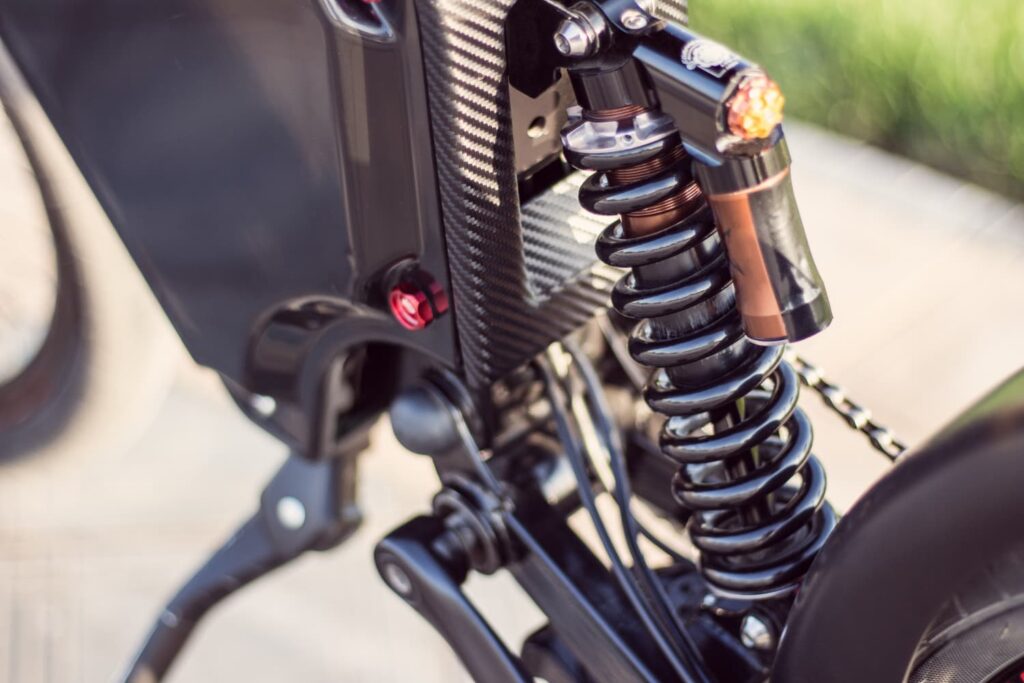Understanding Suspension Basics
When it comes to mountain biking, suspension tuning is crucial for maximizing performance and comfort. Think of your bike’s suspension like a well-tuned instrument; the right adjustments make a world of difference on the trail. Whether you are navigating rocky descents or tackling rooty climbs, having the correct setup can enhance your ride. Let’s delve into the nitty-gritty of suspension adjustments for different terrains.
The Importance of Proper Suspension Tuning
Why should we care about suspension tuning, anyway? Well, it impacts several key aspects of your ride:
- Comfort: A well-tuned suspension absorbs shocks, keeping you more relaxed on bumpy trails.
- Control: Proper adjustments allow you to maintain better traction and stability, particularly in technical sections.
- Efficiency: A good setup minimizes energy loss, allowing you to pedal more efficiently.
In short, your bike’s suspension isn’t just about plush rides; it directly affects your performance and enjoyment. Now, let’s break down the tuning process for different types of terrain.
Adjusting Suspension for Cross-Country Riding
Cross-country trails often feature a mix of smooth and technical sections, so your suspension should be versatile. Here’s how to go about it:
Finding the Right Sag
The first step to tuning your suspension is to set the sag. This refers to how much your bike’s suspension compresses under your weight. Ideally, aim for about 15-20% of your total travel:
- Front Suspension: Measure at least 15-20% sag for XC biking.
- Rear Suspension: Similar, with 20-25% being acceptable for added traction on climbs.
To measure sag, sit on the bike in your riding gear, and have a buddy mark the distance from the top of the shock to its fully extended position. Simple, right?
Adjusting Compression and Rebound
Next up is compression and rebound settings:
- Compression: For cross-country, you want a bit more compression damping to handle rough terrain while still allowing the wheels to track smoothly.
- Rebound: Set your rebound damping so that the suspension returns quickly but doesn’t bounce you off the bike. A slow return leads to a harsh ride.
Start with the manufacturer’s suggestions and then tweak them based on your ride experience. Too stiff? Back off a bit. Too soft? Give it some love with tighter settings.
Suspension Setup for Trail Riding
Trail riding usually presents a mix of features, requiring a more balanced suspension. You’ll want a setup that handles drops, corners, and maybe a rock garden or two.
Finding a Happy Medium with Sag
For trail riding, sag settings often skew a bit more towards comfort:
- Front Suspension: Aim for around 20-25% sag.
- Rear Suspension: This can go up to 25-30% for balancing comfort on descents.
This allows your suspension to soak up impacts without sacrificing performance when climbing. The sag adjustment is vital here, so really take your time with it.
Fine-Tuning Compression and Rebound
Trail riding involves a lot of varied terrain, so you need to adjust your compression and rebound settings accordingly:
- Compression: You can allow for a bit more compression damping here compared to cross-country settings, as you’ll deal with bigger hits.
- Rebound: Set this to allow the wheel to regain contact with the ground quickly, especially when rolling over rough patches.
Remember, experimentation is the name of the game. Take the bike out for a spin, note how it feels, and adjust until it feels just right.
Tuning for Enduro Riding
Enduro riding is all about descending fast and furious. Your suspension needs to handle bigger hits and technical trails. Here’s how to tune your bike for the occasion.
Setting an Aggressive Sag
Since enduro includes steep descents and big jumps, you’ll want sag settings that allow for maximum absorption:
- Front Suspension: Roughly 25% sag.
- Rear Suspension: Leverage around 30% sag for better bottom-out resistance.
This sag allows the suspension to respond adequately to big drops and rough landings, helping to keep you stable.
Dialing in Compression and Rebound
Enduro demands different compression and rebound settings than trail or XC riding:
- Compression: Keep this relatively soft to soak up more impacts without bouncing you off.
- Rebound: Set it rather slow to maintain traction after heavier impacts, but don’t crank it too slow to avoid feeling sluggish.
A good rule of thumb is to start with mid-range settings, then adjust according to how your bike handles during your rides.
Adapting for Downhill Riding
Okay, let’s get real. Downhill riding is an entirely different beast. You are likely facing the steepest gradients and roughest terrains. Your focus should be on maintaining control at high speeds.
Maximizing Sag
For downhill, the setup is pretty forgiving:
- Front Suspension: Aim for approximately 25-30% sag to enhance downhill stability.
- Rear Suspension: Again, focus on a sag around 30-35% for maximum absorption on bumps.
This setup keeps your bike low to the ground, maximizing traction while allowing you to plow through steps and rocks with more finesse.
Compression and Rebound Considerations
Now, let’s talk about those settings:
- Compression: You want a softer compression to handle big drops and tough terrain with ease.
- Rebound: Make this quicker to avoid packing down on rapid drops, but ensure it doesn’t throw you back up into the air after a landing.
It’s all about finding that sweet spot, so adjust slightly and ride again to make sure you are happy with how it feels.
Common Mistakes to Avoid
Even seasoned riders can make errors when tuning their suspension. Here are a few common pitfalls:
- Neglecting Sag: Not measuring sag can lead to inconsistent performance.
- Overcompensating: Going too stiff on compression can make your bike feel harsh.
- Skipping Rebound Settings: Ignoring rebound settings can lead to losing control on descents.
Take your time with the tuning process, and don’t rush into it. Ensure every adjustment is thought through and tested, and you’ll come out with a suspension setup tailored just for you.
Final Tips and Tricks
Before you hit the trails, here are some last-minute tips:
- Keep a journal: Note changes and how your bike feels. This helps in understanding what works best.
- Ride with friends: It’s always fun to compare setups and gather feedback on different terrain types.
- Consult forums: Online biking communities can provide valuable insights and personal experiences.
Tuning your mountain bike suspension can make or break your ride. Whether you are a weekend warrior or a serious racer, the effort you put into dialing in your setup pays off in comfort, control, and confidence on the trail.
Wrapping Up Your Suspension Tuning Journey
Mountain biking is an adventure, and your bike is your trusty steed. A vital part of that equation is ensuring its suspension is finely tuned to the different challenges your trails throw at you. Remember, each terrain requires a different approach to sag, compression, and rebound; the beauty of it is that the process is very much hands-on and personal. Enjoy the ride, and don’t forget to stop and smell the wildflowers along the way.






